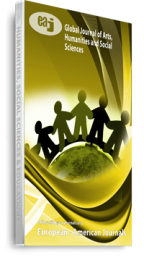Within the international market system, the exchange rate has been a critical criterion for determining the relative power of a domestic currency in comparison to another. Essentially, Nigerian exchange rate policy has been aimed toward safeguarding the Naira against continual loss of its privileged position in the global monetary system from time to time. As a result, different exchange rate regimes have been adopted. Therefore, Exchange Rate Regimes and the Performance of the Real Sector in Nigeria was studied from 1970-2019.The output of real sector variables (agricultural sub-sector, industrial sub-sector, and services sub-sector) was examined using the Auto Regressive Distributed Lag Model technique. Nominal exchange rate and dummy variables of Regulated and Deregulated regimes were used as independent variables, while, controlling for net exports, inflation, bank credit to the private sector, foreign direct investment, external reserve. The results of the estimation revealed that regulated regime periods had a negative but insignificant association with real sector variables, while deregulated regime periods had a positive but insignificant relationship. By implication, the perpetual loss in value of Naira exchange rate remain a source of concern hence; the need to formulate a reliable exchange rate policy that can stand the test of time in Nigeria. In addition, the regulated exchange rate regime was loosely fixed with temporal government intervention in the foreign exchange market. Such monetary interventions have not yielded the desired results. The study recommended that a stronger exchange rate policy be developed that achieves the needs of primary exchange rate users, as well as that more bank credits be extended to the real and export sectors in order to produce high-quality outputs for export rather than relying solely on monetary intervention strategies by the Nigerian Central Bank.
Keywords: exchange rate; real sector; deregulation; monetary policy

